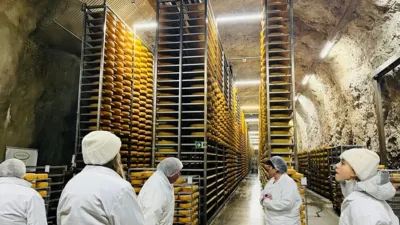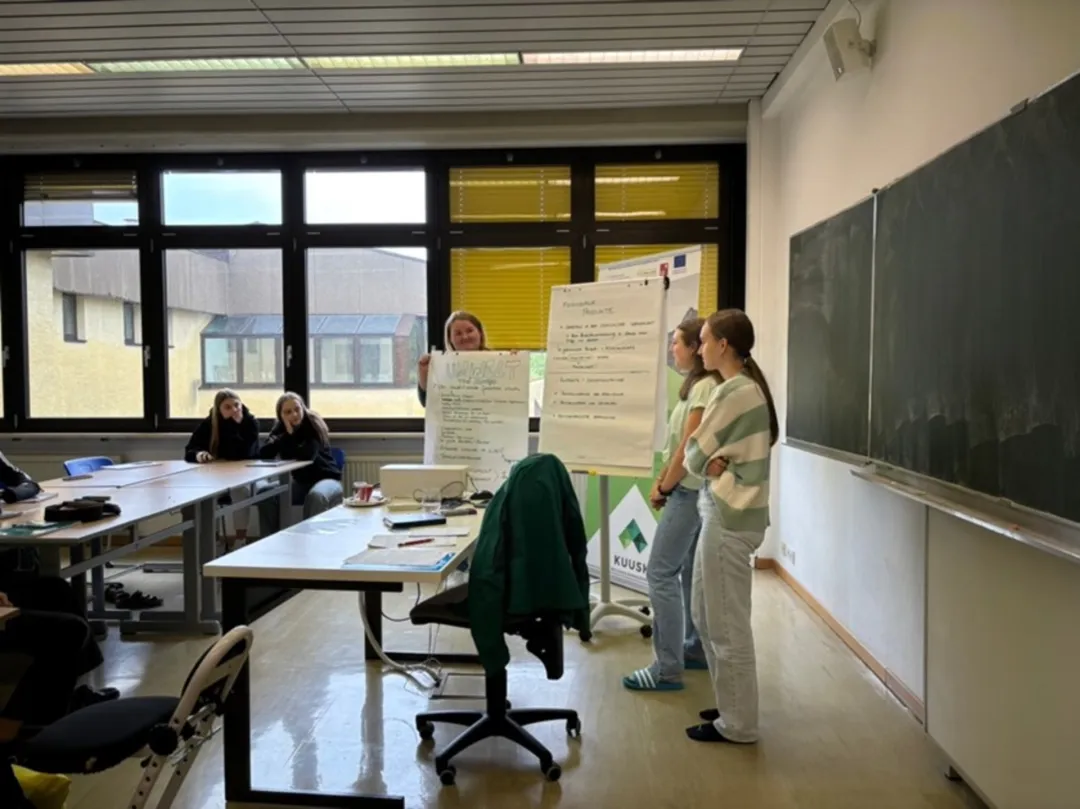General information
RDP Priority
- P6. Social inclusion and local development
RDP Focus Area
- 6B: Local development
RDP Measure
- M19: LEADER/CLLD
Beneficiary type
- Public authority / body
Summary
Animating community-led development can be assisted by LEADER and an example from Germany shows how the CAP has helped introduce rural outreach services dedicated to optimising local employment and development opportunities.
This project’s innovative co-operation created a dynamic community where educational institutions were animated to work closely with companies to ensure that training was best adapted to labour market needs. Internships, exchange programmes and joint projects promoted networking with direct contact between pupils, students and potential employers. Social welfare organisations were animated to play important roles in supporting employees and their families.
LEADER worked closely with companies to develop work-life balance programmes and facilitate career entry. Professional interest groups, such as chambers of commerce, helped represent the needs and interests of employees and companies. Networking created a vibrant and supportive working environment in Kufstein. It fostered innovation, growth and social responsibility in a way that was not as pronounced in other regions.
Results
LEADER-funded community animation in this project resulted in:
- 24 people with disabilities (age, origin, gender) gaining employment.
- Three new coworking spaces created with three new employees.
- Over 50 000 people in the specific target audience reached by paid social media campaigning.
- 45 training actions.
- 10 companies introduced loyalty discount cards.
- 13 image videos and a portfolio of 50 images per municipality were created and made freely available for municipalities, tourism organisations and the KUUSK regional management.

Promoter
Leaderregion Kufstein and surroundings, Untere Schranne, Kaiserwinkl
Funding
Total project cost: 141 947 (EUR)
EAFRD: 46 678 (EUR)
National/Regional: 11 669 (EUR)
Private/own: 42 584 (EUR)
Other: 41 016 (ERDF)
Ressourcen
Context
The LEADER methodology's emphasis on community-led local development empowers rural residents to take an active role in shaping their future, fostering a strong sense of ownership and collaboration. LEADER can co-fund dedicated professionals to work closely with community members, tailoring initiatives that align with local development ambitions. This ensures that prosperity enhancement efforts are both relevant and sustainable. By facilitating workshops, meetings and collaborative projects, outreach staff create a dynamic environment where ideas can flourish, and citizens are encouraged to participate actively in the transformation of their communities.
LEADER-funded community animation also promotes inclusivity by engaging diverse groups within the community, ensuring that even marginalised voices are heard and considered in the planning and decision-making processes. Collaborative principles within LEADER animation support can strengthen the social fabric of rural areas and stimulate economic growth by unlocking local potential and fostering innovation.
The presence of dedicated outreach animation staff helps build and maintain local development momentum, ensuring the community's vision remains continuously aligned with emerging opportunities and challenges. Their proactive engagement can help to bridge gaps between local needs and available resources or capacities. Results create a more adaptable and responsive development process.
Opportunities were identified by a German LAG in the Kufstein region to support a community development outreach and animation project. This had a socioeconomic focus on optimising the capacity of regional workforces and business services by connecting them and advising them on new possibilities for employment and/or income streams.
Objectives
This project (employing a regional employer manager) was needed for numerous reasons, mostly because the local labour market had changed significantly. Demographic changes made it difficult to find and retain qualified labour. In addition to addressing these challenges, the project was launched to ensure that no one was left behind in its support services, with core goals that included promoting the social aspects of diversity and equality.
An overall aim was to strengthen Kufstein as an attractive work location offering an employment ecosystem that meets the needs of companies and employees.
Specific objectives for the CAP’s LEADER funding were:
- Building regional capacities in science, technology, engineering and mathematics (STEM).
- Identify and onboard skilled workers as project participants.
- Increase understanding of diversity.
- Expand childcare for working parents, empowering women and men equally, whilst also helping gender equity in pensions for all.
- Monitor project success to inform the development of better future rural community animation systems.
Activities
The initial awareness-raising activity involved a paid social media campaign targeting commuters, focusing on after-work hours. This specifically spotlighted work-life balance. Communication content (videos and other imagery) for the visibility campaign was created to present a positive and attractive visual regional identity. This content was provided for sharing.
Onboarding of project participants used a technique of preparing online and printed information packages promoting regional attractions and assets for workers and employers.
Events were used to animate networking connections for workers and employers.
Loyalty options like employee discount agreements were promoted as part of the project.
A childcare survey of 88 families was completed and the anonymised results were forwarded to employers and childcare facilities.
SMEs benefited from personnel development workshops on social media advertising, photography, planning and employee assessment.
A dedicated nine-month training programme supported regional companies in creating an inclusive, diverse and equal-opportunity working environment. Large companies in the region were involved.
A meeting between social institutions and regional employers filled information gaps about employing people with disabilities.
Other gaps were filled by a networking event celebrating apprenticeship graduations, as an equivalent graduation accolade for completing a higher education programme.
More animated networking meetings advised project stakeholders on how to improve working environments through discussions on topics such as benefits, labour law, cooperation, mobility, gender equality and retirement-age work-life balance.
Main results
LEADER-funded community animation in this project resulted in:
- 24 people with disabilities (age, origin, gender) gaining employment experience.
- Three new coworking spaces with three new employees.
- Over 50 000 people in the specific target audience reached by paid social media campaigning.
- 45 training measures.
- 10 companies introduced loyalty discount cards.
- 13 image videos and 50 image images per municipality were created and made freely available for municipalities, tourism organisations, and the KUUSK regional management.
In addition, the KUUSK region was recognised as a STEM region and next steps involve creating a comprehensive, gender-neutral STEM programme that covers all school types.
An expansion of coworking spaces reduced commuting times and CO2 emissions, which contributed to a more environmentally friendly region.
Improved cohesion between companies and regional stakeholders created stable and sustainable economic relationships.
Residents’ quality of life improved through better access to (and/or knowledge about) attractive jobs and a good work-life balance, which had a positive impact on their health and well-being.
High-profile branding by the project helped make the region more attractive to highly qualified professionals and talent, thereby increasing the competitiveness of companies and supporting their growth and innovative strength.
Measures to promote diversity and inclusion helped strengthen a diverse and open working environment, favouring creative and innovative solutions.
Cooperation with educational institutions and the promotion of further training opportunities kept the workforce updated. This increased the regional economy's innovative capacity.
Key lessons
- Labour migration was already a challenge, and employee expectations also changed as flexible working hours, home office options and a good work-life balance became more popular and standard. Digitalisation also changed many work processes, incentivising companies to invest in modern infrastructure and training.
- Strong regional employer management led to a more attractive, liveable and sustainable region that was better equipped to face future challenges.
- Successful branding can increase regional awareness and pride among residents, fostering loyalty to the region and long-term engagement.
- Through these inclusive outreach and animation projects, LEADER enhances social cohesion and builds a resilient network of local stakeholders invested in the long-term prosperity of their region.
- By acting as connectors and facilitators, local animation staff’s ongoing engagement empowers communities to use their unique strengths and resources, ultimately driving sustainable progress and resilience in rural areas.
The Regional Employer Management project has managed to create a working environment that not only fulfils my professional needs, but also improves my quality of life. As a newcomer, I received all the information I needed through the welcome pack. New employees have been given the opportunity to meet new people through the staff events. The flexibility, the promotion of further training and the support in balancing work and family life have made a huge difference. I feel really valued and supported here.
The quality of networking between the education sector, companies, social organisations and professional interest groups (chambers) was decisive for development in Kufstein.
Melanie Steinbacher

